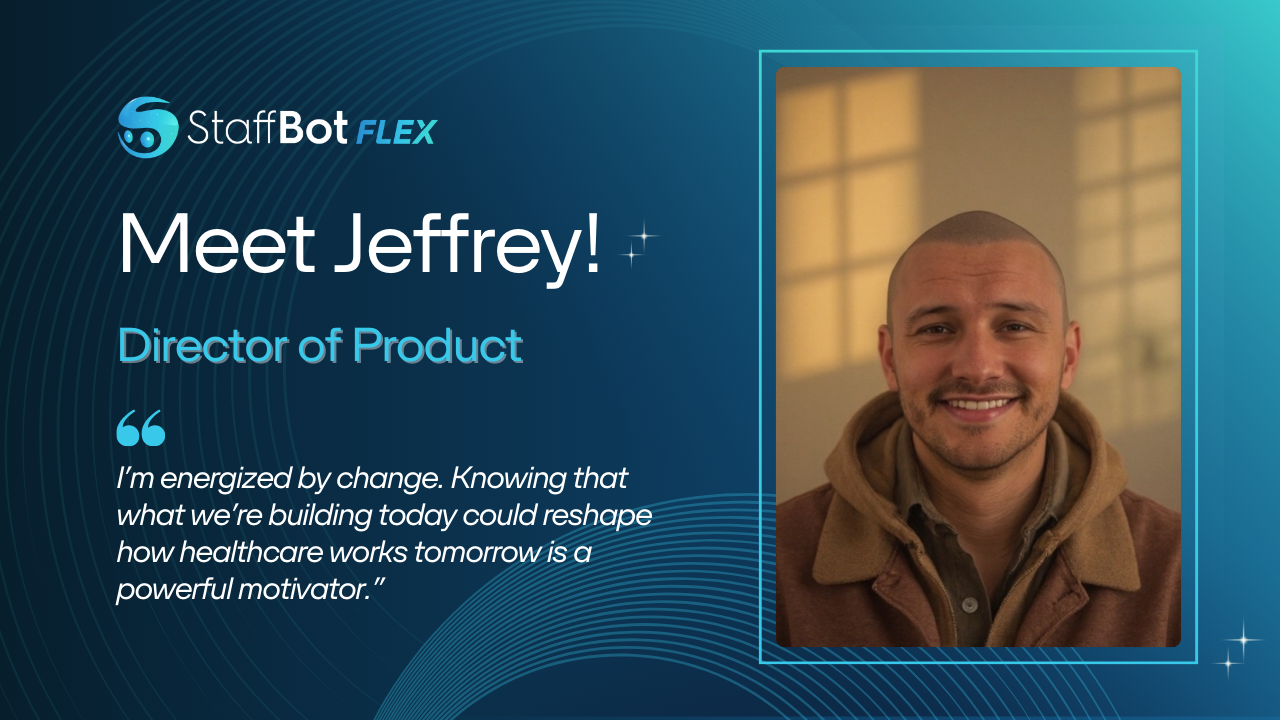


One of the most powerful components in retaining nurses is flexibility according to a McKinsey & Company survey. 86% to be exact. That’s pretty powerful.
Where facilities have traditionally operated under rigid workforce models, there’s a new wave approaching—and it’s about being open to new ideas. Non-traditional methods. Strategies to tackle recruitment problems. To alleviate the burnout healthcare employees face. To value those who stick around. And one long-term solution doing just that is flexible scheduling.
Once a fanciful dream, flexible scheduling has emerged as an up-and-coming reality for many in healthcare. In fact, it’s becoming a core component to organizations attracting and retaining their talent. It’s also a justifiable demand from professionals seeking to cope with the challenging demands of working in an industry notorious for understaffing, high burnout, and immense patient loads.
Scheduling flexibility is a powerful solution in achieving greater work-life balance. In improving team productivity. In restoring trust. In creating a powerful brand culture that attracts talent. In bettering care. Amid long work weeks, ongoing turnover, ever-growing shortages, and increasing burnout, flexible scheduling offers relief to many of these workforce challenges.
In this blog, we examine what flexible scheduling in healthcare is, the data behind why it’s important in today’s landscape, the benefits, and best practices to implement flexible scheduling models for your facility!

Flexible scheduling encompasses a variety of different models aimed at allowing healthcare professionals to choose what type of shifts they want to work. This type of structure allows employees to select shifts that align with their personal needs. Typically, management determines scheduling parameters based on unit or departmental demands and then works to balance those shift needs with employee preferences.
So, how does flexible scheduling really work? The truth is, there’s no single answer, or even a single model. Every health organization is different, with unique needs, cultures, employees, and patient demands, meaning there’s no “one-size-fits-all” approach.
There are several different approaches and models to flexible scheduling. And this is a good thing. Various types of flexible scheduling options means defining what is right for your team.
Here are a few types of models for scheduling flexibility (but keep in mind there can be more!):
A common flexible model (and did we mention one of our favorites?) is self-scheduling. This arrangement allows staff to select their own shifts within defined guidelines. Employers post and track available shifts using an app or online platform, like StaffBot Flex, while their team schedules themselves. This approach gives employees control over their work hours and the ability to negotiate shift swaps with others.
P.S. If you’re looking for this kind of solution, look no further—learn how our self-scheduling app supports both organizations and their employees!
Flextime models are an excellent way to offer flexibility while ensuring coverage. In this set up, a facility establishes core hours when all staff must be present (such as 9 a.m. to 2 p.m.), but employees can choose their start and end times around those core hours. For example, a registered nurse might come in as early as 7 a.m. and leave at 3 p.m.
Offering staggered shifts means employees can work non-conventional start and end times, such as 10 a.m. to 10 p.m. This model helps health organizations provide extended patient coverage during peak hours while giving staff more options to fit work around their lives.
Compressed workweeks allow staff to complete their standard workweek in fewer days by taking on longer shifts. For instance, rather than having five 8-hour workdays, an employee can opt for four 10-hour days, gaining an extra day off.
This practice entails two part-time employees sharing the responsibilities of a single full-time position. For example, a physician role could be divided between two doctors working three days a week each.
Telehealth and remote work models allow healthcare professionals to perform patient consultations via video or manage administrative tasks from home or offsite locations. This flexibility can apply to part of the workweek or, for some roles, be fully virtual. Beyond reducing stress and enhancing work-life balance, it also expands care delivery by enabling organizations to find talent from virtually anywhere.
Shift swapping isn’t anything new, but it remains a highly effective way to give staff flexibility while accommodating their own personal lives. This model allows employees to trade shifts with one another while maintaining compliance with labor laws and staffing requirements.
Long hours. High stress. Burnout. This crisis has been devastating for everyone in healthcare. The World Health Organization (WHO) identifies a close correlation between burnout and workplace stress. Burnout is the emotional, physical, and psychological depletion resulting from chronic stress. Many will experience a lowered sense of self-efficacy, decreased energy, fatigue, depression, depersonalization, and many more detrimental effects.
Long work hours and overwhelming workloads highly contribute to burnout. A 2023 survey found that physicians average 50 work hours per week, with some specializations working more than 55 hours. On a similar note, the U.S. Bureau of Labor Statistics (BLS) reported that physicians worked 48 hours weekly in 2022, and further pointed out that they often work weekends, long shifts and have on-call duties. Advanced practitioners like Nurse Practitioners and Physician Assistants also work long hours, averaging 40 hours per week.
Nurses, too, face similar demanding schedules. The National Sample Survey of Registered Nurses found that RNs work nearly 40 hours per week, with many enduring 12-hour shifts that worsen stress and fatigue.
It’s hard to ignore how long work hours and overwhelming workloads contribute to burnout, especially when combined with other factors such as shortages and constant turnover.
A 2023 survey found that 7 in 10 healthcare workers identified their workload and stress as unsustainable. Physicians, in particular, face nearly 50% burnout rates—a significant improvement from record highs in 2021 (a staggering 61%), but is still a pressing issue that demands attention. An AMA study revealed that over half of physicians working 61+ hours a week experience burnout, with nearly 50% of those working 51–60 hours also affected.
Nurses are also subject to demanding hours and workloads resulting in elevated levels of burnout. Reports indicate nurse burnout rates range anywhere from 11% to 56%, with one study revealing that 75% of acute care nurses reported stress and exhaustion, and 60% felt burned out. Common findings also indicate many nurses actively consider leaving their positions with a recent study showing that more than one-third anticipate changing jobs this year, signifying nurse frustration is still a very real issue.
Burnout can have severe consequences on patient outcomes. Many studies support the correlation between burnout, low staffing levels, and negative patient outcomes. For example, one 2024 systematic review and meta-analysis found a negative association between nurse burnout and patient safety. Burnout was found to be associated with lower patient safety climate, increased patient falls, medication errors and a rise in nosocomial infections.
Another study even cites burnout as an occupational hazard affecting not only nurses and patients, but organizations and societies. They assert that where burnout was once viewed as an individual problem, it’s now recognized as a collective phenomenon that needs to be addressed together for the betterment of healthcare.
Burnout has taken its toll for far too long. On our employees. Our patients. Our organizations. Tackling it isn’t just on the individual, it’s really the responsibility of all healthcare teams. It’s important to note that overcoming burnout doesn’t have a single fix, it’s going to require a multifaceted approach.
And that’s where flexible scheduling comes into play. This approach is truly impactful in empowering employees to have more control over their work and personal lives.
Flexible scheduling is providing healthcare organizations the opportunity to make meaningful change. It allows staff to find happiness and balance within their lives. It’s fostering greater trust between employers and employees for mutual success.
We saw how influential flexibility can be – 86% of nurses said it was the key reason for staying in their current position. Furthermore, 63% of nurses ranked flexibility as most effective to their wellbeing.
1. Reduced Burnout and Improved Wellbeing: With control over shifts, clinicians are empowered to live more balanced lives. They can manage their obligations, tend to personal events, address health issues, participate in extracurricular activities, pursue continued education, and more. This control over schedules leads to healthier, more fulfilled lives.
2. Reduced Turnover and Absenteeism: Fostering a culture of trust, work-life balance, and prioritizing employee well-being promotes loyalty and retention. When employees feel valued and supported, they are less likely to seek opportunities elsewhere. Flexible scheduling also helps reduce unplanned absences by allowing staff to manage personal needs without disrupting operations.
3. Increased Productivity: When employees feel refreshed and have control over their schedules, they bring greater focus, energy, and motivation to patient care. Flexibility allows clinicians to work when they are at their best. Additionally, well-rested staff are more engaged and make fewer errors.
4. Heightened job satisfaction: With greater balance achieved, workers feel more fulfilled and motivated in their roles. Flexible scheduling empowers employees with autonomy, leading to a sense of control over their professional and personal lives. This enhanced job satisfaction fosters a positive work environment.
5. Enhanced patient care: As we saw in the data before, burnout is strongly linked to negative patient outcomes. Eliminating burnout allows clinicians to deliver better, more attentive care to patients, reducing instances of medical errors and patient dissatisfaction.
6. Attract and Retain Talent: In an industry where there’s high competition, scheduling flexibility offers organizations a competitive advantage. Flexibility not only attracts skilled talent, but it helps keep them around too.
7. Stronger Company Culture: Offering flexible work options demonstrates to candidates and staff that an organization values its employees’ time, health, and personal commitments. A positive workplace culture improves morale and supports a healthy work environment where staff feel empowered and respected.
8. Cost Savings: Flexible scheduling helps reduce overtime, travel nurse expenses, and staffing inefficiencies. Lower turnover also cuts recruitment and training costs while minimizing the financial impact of absenteeism.
1. Collaborate with Key Stakeholders: Work with business and HR leaders to design effective scheduling models.
2. Align Flexibility with Care Area Needs: Base schedules on patient volume, staffing ratios, and care demands.
3. Engage and Consult Employees: Gather staff input to ensure schedules meet both employee and operational needs.
4. Implement Clear Policies and Guidelines: Define and communicate eligibility, approval processes, and performance standards.
5. Leverage Technology for Efficiency: Use scheduling platforms for real-time updates and easier shift management.
6. Foster Ongoing Collaboration: Maintain open communication between staff and leadership for continuous improvement.
7. Monitor and Evaluate Outcomes: Regularly track scheduling impacts on satisfaction, performance, and care quality.
8. Adapt and Evolve: Adjust scheduling models as workforce and patient needs change.
We’ve thoroughly explored what flexible scheduling entails, the variety of models at a facility’s disposal, the benefits of it, and most importantly, why it’s even necessary. Hospitals grappling with continual shortages, turnover, and burnout have to start thinking in new ways to approach these workforce challenges.
There are many healthcare workforce solutions aimed at helping institutions overcome these issues, and flexible scheduling is one simple yet powerful method. Through it, facilities can also begin healing other workforce challenges, such as turnover, absenteeism and recruitment barriers.
If flexibility is a strategy you’ve been considering, let’s talk! Whether you have general questions about how flexibility works or want to see how our self-scheduling app can improve your workplace, we have the answers!
Fill out the form, and we’ll get back to you!


